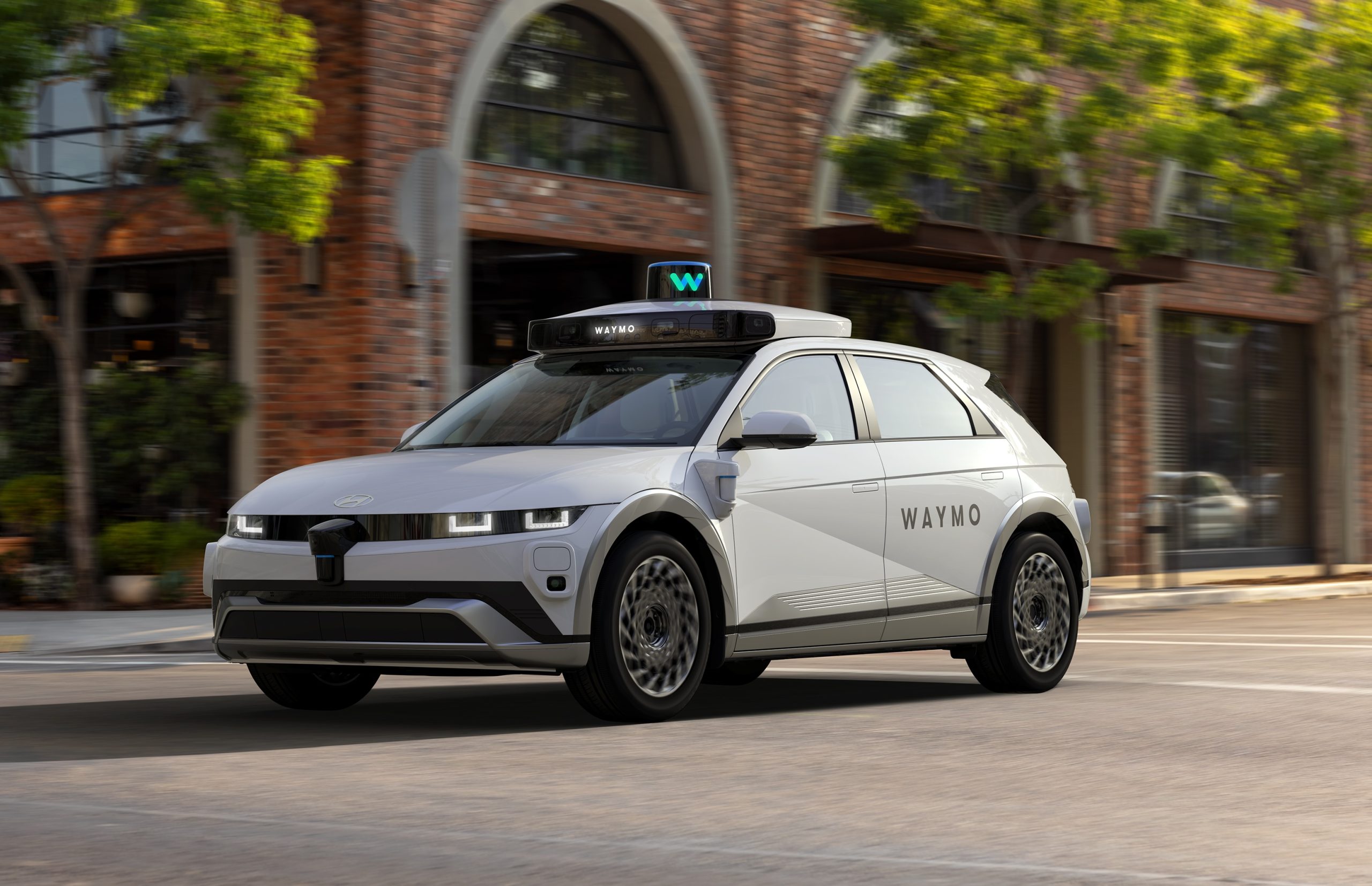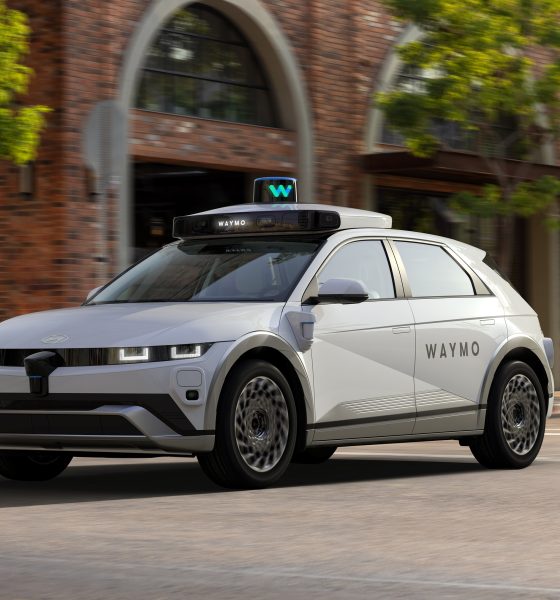Waymo, the driverless ride-hailing arm of Google parent company Alphabet, has now launched a new AI research model for its self-driving operations.
In a pair of press releases on its approach to AI and its new end-to-end multimodal model for autonomous driving, dubbed EMMA, Waymo has shared details about its plans for the AI research model going forward. The company says it is still using the EMMA model in research stages, rather than in operational vehicles, and the approach comes as an alternative that looks a lot like Tesla’s Full Self-Driving (FSD) and other end-to-end model approaches.
“EMMA is research that demonstrates the power and relevance of multimodal models for autonomous driving,” said Drago Anguelov, VP and Head of Research at Waymo. “We are excited to continue exploring how multimodal methods and components can contribute towards building an even more generalizable and adaptable driving stack.”
Waymo says the EMMA model uses real-world knowledge based on its Gemini language model, while the end-to-end approach is expected to eventually let autonomous vehicles operate directly from sensor data and real-time driving scenarios. The company has also highlighted its use of Large Language Models (LLMs) and Vision-Language Models (VLMs), calling its architecture the Waymo Foundation Model.
Hear the company’s executive detail the Waymo research and AI program more below.
EMMA research and criticisms
In the announcement press release about EMMA, Waymo lays out the following as key aspects of the research program:
- End-to-End Learning: EMMA processes raw camera inputs and textual data to generate various driving outputs including planner trajectories, perception objects, and road graph elements.
- Unified Language Space: EMMA maximizes Gemini’s world knowledge by representing non-sensor inputs and outputs as natural language text.
- Chain-of-Thought Reasoning: EMMA uses chain-of-thought reasoning to enhance its decision-making process, improving end-to-end planning performance by 6.7% and providing interpretable rationale for its driving decisions.
“The problem we’re trying to solve is how to build autonomous agents that navigate in the real world,” says Srikanth Thirumalai, Waymo VP of Engineering. “This goes far beyond what many AI companies out there are trying to do.”
Still, some have cast doubt on the large-scale end-to-end model, saying that it may be too risky to utilize generative AI models without including significant safeguards.
“It’s bandwagoning around something that sounds impressive but is not a solution,” said Sterling Anderson, Aurora Innovation’s Chief Product Officer, in a statement to Automotive News.
Mobileye CTO Shai Shalev-Shwartz called end-to-end approaches “a huge risk,” especially regarding the verification of decision-making process for vehicles operating on the model. It’s also worth noting that Waymo is currently only researching the approach, and it doesn’t currently have any plans to make it commercially available.
The news comes after Waymo recently closed on a $5.6 billion funding round, effectively bringing the company’s valuation up past $45 billion. The company is also working on its next generation of self-driving vehicles based on the Hyundai Ioniq 5, built at a new factory in Georgia.
What are your thoughts? Let me know at zach@teslarati.com, find me on X at @zacharyvisconti, or send us tips at tips@teslarati.com.
Need accessories for your Tesla? Check out the Teslarati Marketplace:

News
Tesla FSD fleet is nearing 7 billion total miles, including 2.5 billion city miles
As can be seen on Tesla’s official FSD webpage, vehicles equipped with the system have now navigated over 6.99 billion miles.

Tesla’s Full Self-Driving (Supervised) fleet is closing in on almost 7 billion total miles driven, as per data posted by the company on its official FSD webpage.
These figures hint at the massive scale of data fueling Tesla’s rapid FSD improvements, which have been quite notable as of late.
FSD mileage milestones
As can be seen on Tesla’s official FSD webpage, vehicles equipped with the system have now navigated over 6.99 billion miles. Tesla owner and avid FSD tester Whole Mars Catalog also shared a screenshot indicating that from the nearly 7 billion miles traveled by the FSD fleet, more than 2.5 billion miles were driven inside cities.
City miles are particularly valuable for complex urban scenarios like unprotected turns, pedestrian interactions, and traffic lights. This is also the difference-maker for FSD, as only complex solutions, such as Waymo’s self-driving taxis, operate similarly on inner-city streets. And even then, incidents such as the San Francisco blackouts have proven challenging for sensor-rich vehicles like Waymos.
Tesla’s data edge
Tesla has a number of advantages in the autonomous vehicle sector, one of which is the size of its fleet and the number of vehicles training FSD on real-world roads. Tesla’s nearly 7 billion FSD miles then allow the company to roll out updates that make its vehicles behave like they are being driven by experienced drivers, even if they are operating on their own.
So notable are Tesla’s improvements to FSD that NVIDIA Director of Robotics Jim Fan, after experiencing FSD v14, noted that the system is the first AI that passes what he described as a “Physical Turing Test.”
“Despite knowing exactly how robot learning works, I still find it magical watching the steering wheel turn by itself. First it feels surreal, next it becomes routine. Then, like the smartphone, taking it away actively hurts. This is how humanity gets rewired and glued to god-like technologies,” Fan wrote in a post on X.
News
Tesla starts showing how FSD will change lives in Europe
Local officials tested the system on narrow country roads and were impressed by FSD’s smooth, human-like driving, with some calling the service a game-changer for everyday life in areas that are far from urban centers.

Tesla has launched Europe’s first public shuttle service using Full Self-Driving (Supervised) in the rural Eifelkreis Bitburg-Prüm region of Germany, demonstrating how the technology can restore independence and mobility for people who struggle with limited transport options.
Local officials tested the system on narrow country roads and were impressed by FSD’s smooth, human-like driving, with some calling the service a game-changer for everyday life in areas that are far from urban centers.
Officials see real impact on rural residents
Arzfeld Mayor Johannes Kuhl and District Administrator Andreas Kruppert personally tested the Tesla shuttle service. This allowed them to see just how well FSD navigated winding lanes and rural roads confidently. Kruppert said, “Autonomous driving sounds like science fiction to many, but we simply see here that it works totally well in rural regions too.” Kuhl, for his part, also noted that FSD “feels like a very experienced driver.”
The pilot complements the area’s “Citizen Bus” program, which provides on-demand rides for elderly residents who can no longer drive themselves. Tesla Europe shared a video of a demonstration of the service, highlighting how FSD gives people their freedom back, even in places where public transport is not as prevalent.
What the Ministry for Economic Affairs and Transport says
Rhineland-Palatinate’s Minister Daniela Schmitt supported the project, praising the collaboration that made this “first of its kind in Europe” possible. As per the ministry, the rural rollout for the service shows FSD’s potential beyond major cities, and it delivers tangible benefits like grocery runs, doctor visits, and social connections for isolated residents.
“Reliable and flexible mobility is especially vital in rural areas. With the launch of a shuttle service using self-driving vehicles (FSD supervised) by Tesla in the Eifelkreis Bitburg-Prüm, an innovative pilot project is now getting underway that complements local community bus services. It is the first project of its kind in Europe.
“The result is a real gain for rural mobility: greater accessibility, more flexibility and tangible benefits for everyday life. A strong signal for innovation, cooperation and future-oriented mobility beyond urban centers,” the ministry wrote in a LinkedIn post.
News
Tesla China quietly posts Robotaxi-related job listing
Tesla China is currently seeking a Low Voltage Electrical Engineer to work on circuit board design for the company’s autonomous vehicles.

Tesla has posted a new job listing in Shanghai explicitly tied to its Robotaxi program, fueling speculation that the company is preparing to launch its dedicated autonomous ride-hailing service in China.
As noted in the listing, Tesla China is currently seeking a Low Voltage Electrical Engineer to work on circuit board design for the company’s autonomous vehicles.
Robotaxi-specific role
The listing, which was shared on social media platform X by industry watcher @tslaming, suggested that Tesla China is looking to fill the role urgently. The job listing itself specifically mentions that the person hired for the role will be working on the Low Voltage Hardware team, which would design the circuit boards that would serve as the nervous system of the Robotaxi.
Key tasks for the role, as indicated in the job listing, include collaboration with PCB layout, firmware, mechanical, program management, and validation teams, among other responsibilities. The role is based in Shanghai.
China Robotaxi launch
China represents a massive potential market for robotaxis, with its dense urban centers and supportive policies in select cities. Tesla has limited permission to roll out FSD in the country, though despite this, its vehicles have been hailed as among the best in the market when it comes to autonomous features. So far, at least, it appears that China supports Tesla’s FSD and Robotaxi rollout.
This was hinted at in November, when Tesla brought the Cybercab to the 8th China International Import Expo (CIIE) in Shanghai, marking the first time that the autonomous two-seater was brought to the Asia-Pacific region. The vehicle, despite not having a release date in China, received a significant amount of interest among the event’s attendees.










